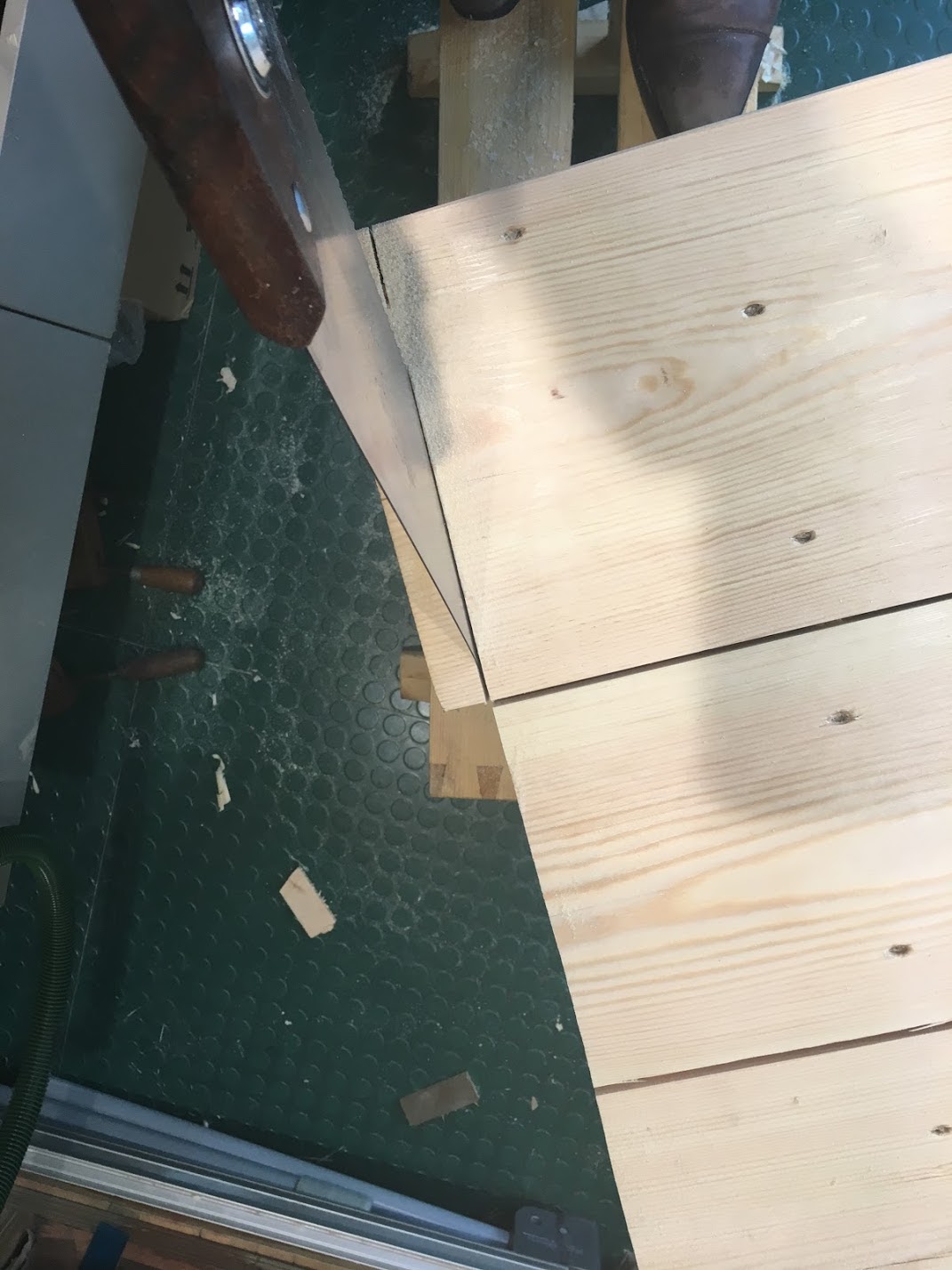I have now flattened the top and rear apron – it took about an hour and forty five minutes (for the rear I just took off the grungy surface but made no effort to flatten it). This is in addition to the time I spent previously removing the high spots on the top and doing the front apron, so all together I have spent a several hours flattening.
I followed the formula specified by Mr Maguire (remove obvious high spots, go across the grain until you get full shavings; go diagonal in one direction then return in the other; finally a few full length shavings). I did check regularly that it was getting flatter but it seems that this technique does not require a lot of skill and the top came out flat despite my inexperience. Mind you, I am pretty sure having a long plane helped.
I did go over the top with a smoother, forgetting that I will have to turn the bench upside down to install the vice thus scratching and marking it all over again.


I then cut off the end of the bench to level it up.

Finally, I drilled 4 holes for the vice, thinking this would save time compared with chopping out a larger single mortice (this step actually added loads of unnecessary faffing around, so don’t copy me!).
I have a 1 1/4 auger bit that was included in a mixed bag of bits and this is just the right size to accommodate the screw, rods and QR mechanism with a bit of wiggle room.
I sharpened the bit first – a task I had been nervous of doing before getting this mixed bunch of bits to practice on, however it turns out there is not a lot to know :
1. you can sharpen the ‘spurs’ (the spurs score the circumference of the hole to create a neat cut), but you should only file them on the inside edge. Otherwise you will reduce the diameter of the circle that is scored so the entrance to the hole is more likely to torn by the cutting lips as they enter the wood.
2. sharpening the cutting lips can be done with a saw file – a few gentle strokes is normally enough, and then a very light pass underneath to remove any burr (note that you don’t need to get them particularly sharp for them to cut).
The only thing I have found that actually stops them working is when the feed screw is knackered or when there is an insufficient relief angle on the underside of the cutting edges (in which case the shavings push the bit out of the hole and stop the lead screw from getting a purchase). It is easy to fix the latter by making the underside of the cutting lips a bit steeper – not sure if a dodgy feed screw can be fixed though.
anyhow, I digress. I’ll do another update tomorrow – nearly done!
